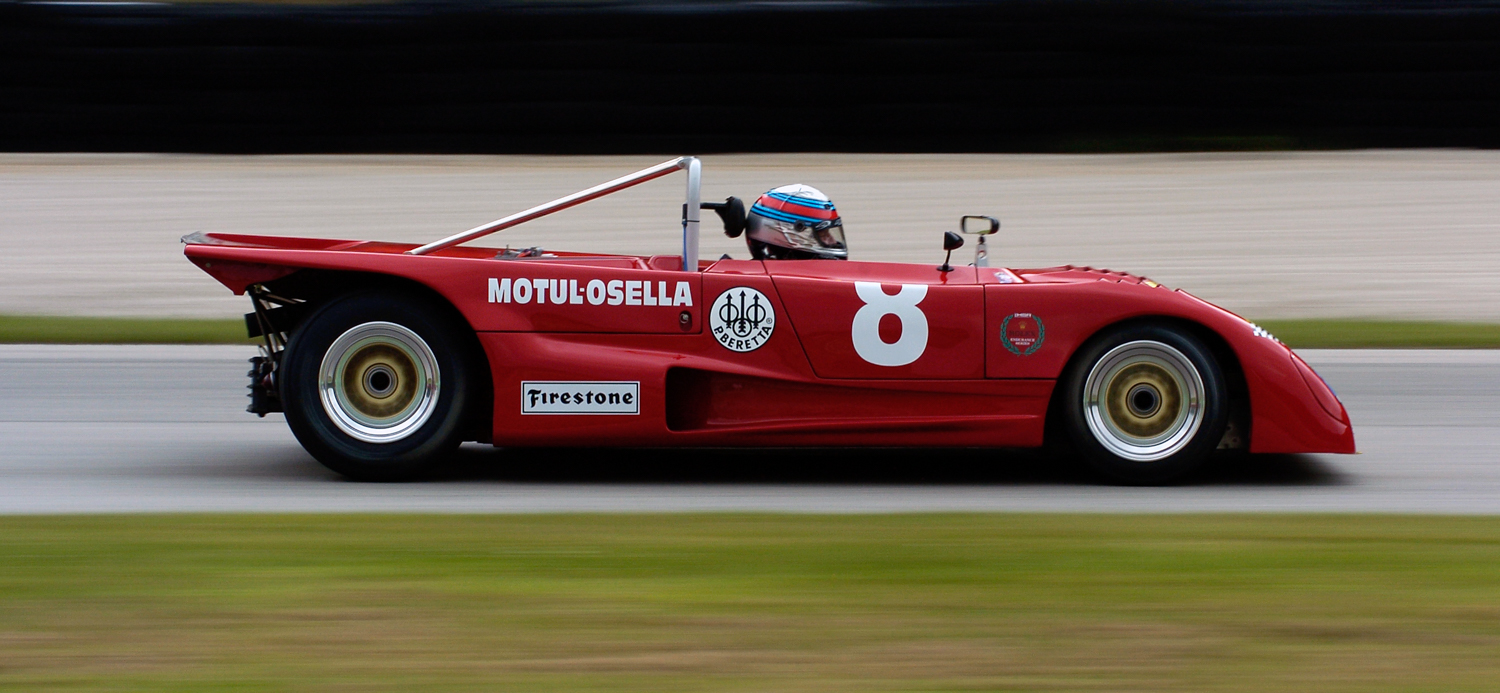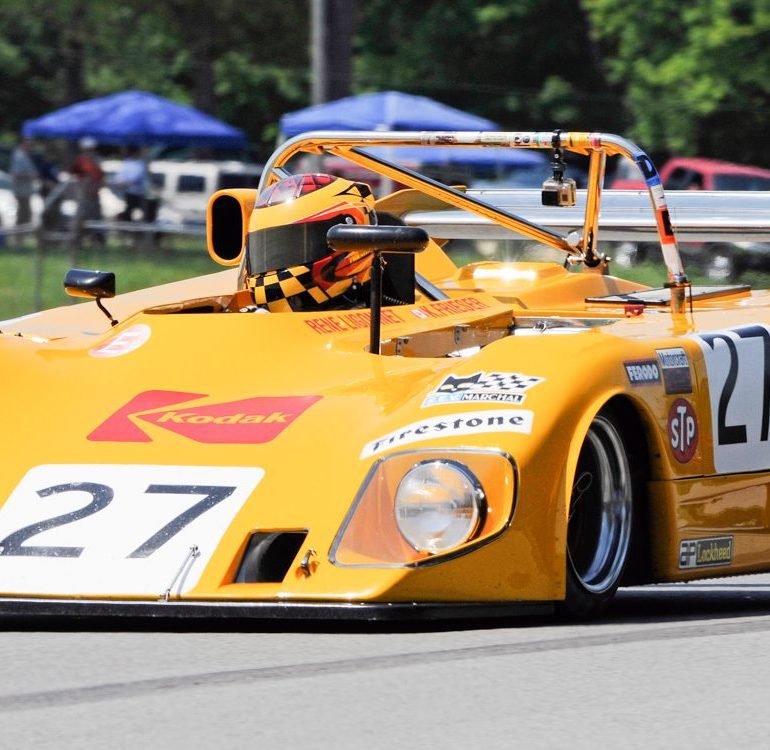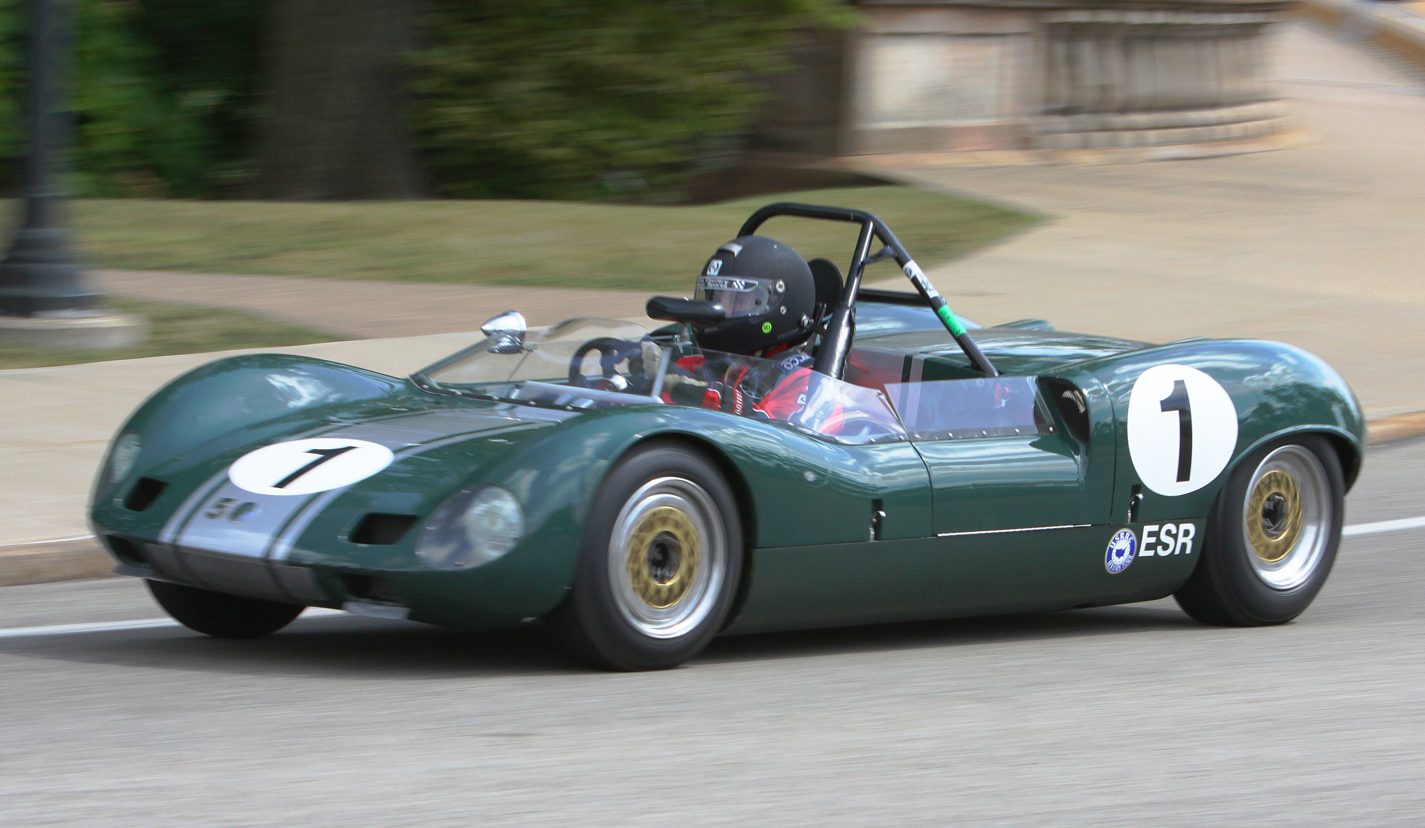Two-liter sports racing cars have always had a place to compete within the ever-changing regulations of international motorsports; the World Sports Car Championship from 1953-1961, the Speedworld Challenge from 1962-1963, the International Championship of Makes from 1964-1971 and the World Championship of Makes from 1972-1981. There was even a European Championships of Makes for cars up to two liters from 1970-1975. This allowed manufacturers to showcase their design and engineering excellence by producing a limited number of purpose-built racing cars to compete at the world’s greatest racing venues. There was great racing in the under-2.0-liter class. On the right circuit, these nimble cars could often get the best of their larger competitors. A World Champion-ship of Makes with race circuits such as Silverstone, Nürburgring, Le Mans, Monza, Daytona and Sebring resulted in an era of motorsports that may never happen again. Today, these historic cars are highly sought after by collectors, not just for the admiration of their technology, but to also participate in reenactments of these famous racing events.
1972 Lola T290

Eric Broadly founded Lola Cars in Huntingdon, England, in the 1950s. By the 1960s, Lola Cars were well known for building successful sports racing and single-seater racing cars. In 1970, they entered the 2.0-Liter European Sports Car Championship for makes with the Lola T210, which had a monocoque construction, while Chevron still had a tubular space frame design. Lola narrowly lost the championship to Chevron by a mere single point. In 1971, Lola won the championship with the T212. For 1972, Lola was to design an entirely new 2.0-liter car with a formidable design team. Lola designers Eric Broadley and Bob Marston were joined by a young Patrick Head and John Barnard. Both Head (Williams F1) and Barnard (McLaren F1 and Ferrari F1) were later to be involved with the design of multiple Formula One world championship–winning cars. The T290 was an improved full monocoque design. It was powered by a fuel-injected Cosworth FVC engine mated to a Hewland FGA 5-speed gearbox. This 1,200-pound car with 260-plus bhp was an outstanding racing car. Lola drivers of the T290 were none other than Gerrard Larrousse, Vic Elford, Guy Edwards, Joe Bonnier, Jean Louis Lafosse, David Hobbs, and in the United States, a young Bobby Rahal. The T290 was one of the most advanced 2.0-liter sports prototypes of its day and was the basis for the T292–T298 series as well as the 3.0-liter T280–T286 series. Today, it is a great choice for historic racing.
1963 Elva Mark 7
Frank Nicholas founded Elva cars in 1954 in sleepy, little, Bexhill-on-sea Sussex, England, not far from the Goodwood circuit. Elva sports cars were quite successful and found their way to America being sold by distributor Carl Haas in Chicago, IL. The Mark 7 was designed by Keith Marsden in 1963. It had a tubular space frame, four wheel disc brakes, a Hewland gearbox, and was powered by a variety of engines, 1100 cc Ford Push-rod and Coventry Climax, 1500 cc Lotus twin cam, 1800 cc BMW and even 1700 cc Porsche 4 cam. 69 cars were built between 1963 and 1964; 19 had Porsche power (the Elva Porsches,) and 10 had BMW power. The 7S was quite an improvement over the 7, with larger wheels, bigger uprights, Girling AR brake calipers, larger radiators, and a strengthened frame. The 7S’s were powered by the new BMW engine and were very successful, winning SCCA titles in America. A direct competitor with the Lotus 23, “Road and Track” magazine said in a 1963 track test when asked to say which was the better car, “it is six of one and a half dozen of the other, both are winners,” but the Elva was certainly better looking. Elva cars were later sold to Trojan, the customer arm of McLaren cars, and in 1966 their 12-year run of great sports cars ended.
Criteria Used For Assessing Valuations for this Guide:
- Degree of Originality
- Overall Condition, Restoration
- Technology, Design, Coachbuilder
- Production Numbers/Rarity
- Competition History
- Ownership History, Documentation
- Modern Event Eligibility
Regional Variances
The prices stated in this guide are based on U.S. values. The values of historic racing cars can vary as much as 25%-35% in other countries, depending on local market appeal, currency rates, import duties, and VAT. Most of the time, we are able to document known sales or closed escrows, as they say in real estate. When this is not possible, a logical estimate of the car’s value is given, based on its sales history and relationship to cars of its type.
The prices stated in this guide are based on U.S. values. The values of historic racing cars can vary as much as 25%-35% in other countries, depending on local market appeal, currency rates, import duties, and VAT.
LEVEL |
VALUATION CATEGORIES |
|---|---|
I |
The best combination of all criteria. |
II |
Satisfies mid-range of criteria. |
III |
In need of restoration. Meets only a few points of criteria |





